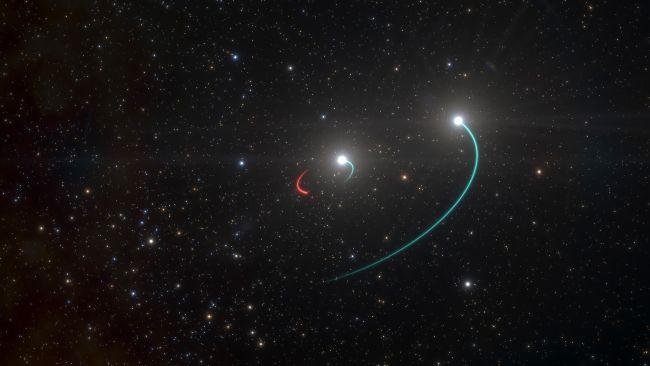The closest black hole may be the closest black hole to Earth. It’s so close you can identify it in the night sky without a telescope.
The black hole is lurking only 1,000 light-years from Earth in the southern constellation of Telescopium. It belongs to a system with two companion stars that are bright enough to see with the naked eye. Of course, you can’t actually see a black hole. A black hole has such a strong gravitational pull that not even light can escape it.
Astronomers using the La Silla Observatory in Chile discovered this nearby black hole while study the binary star system. When they analyzed their data, the researchers discovered that the star’s movements were wrong. A third massive object was influencing the star’s orbits: a perfect candidate for a black hole.

The three-body system appears as a single, fifth-magnitude star in the modern constellation of Telescopium, near the border with the constellation of Pavo, the peacock. On the magnitude scale, in which smaller numbers denote brighter objects, the faintest objects visible to the human eye are at magnitude 6.5.
Currently shining at magnitude 5.4 — just slightly brighter than Uranus, the dimmest visible planet — HR 6819 is just bright enough for the human eye to see without a telescope.
What to read next:



